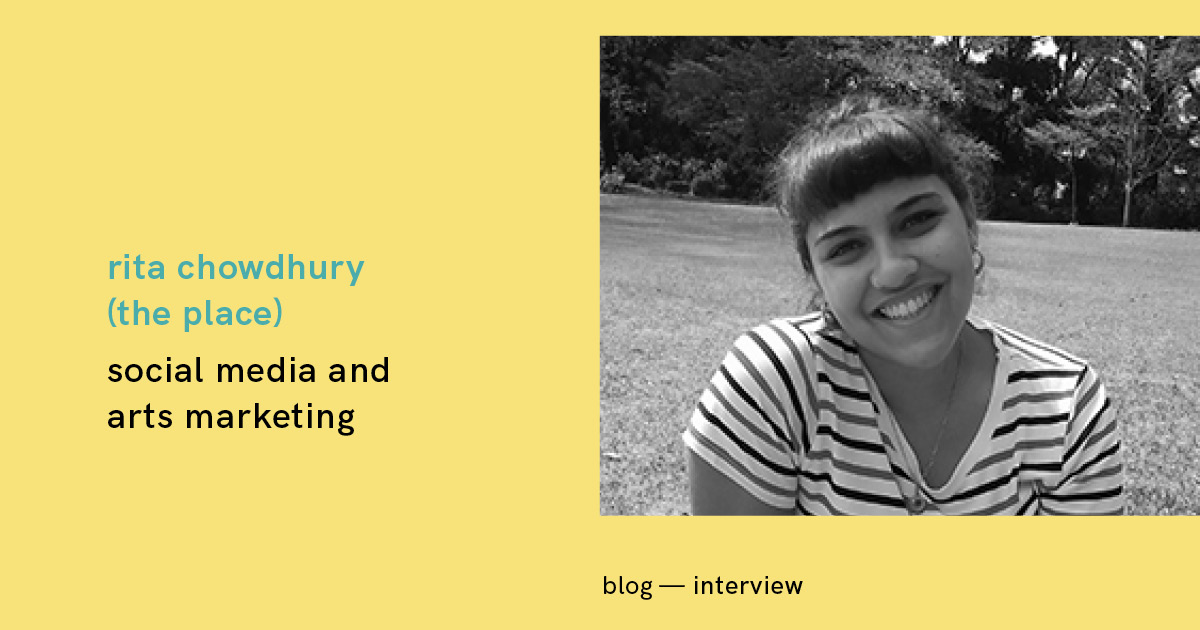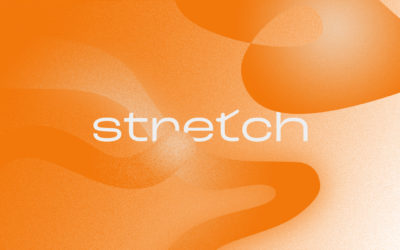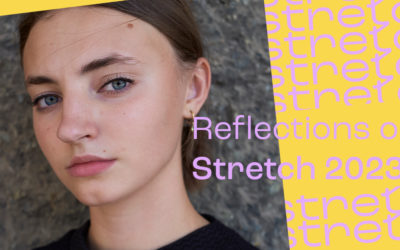Arts Marketing & Social Media Management for Dance: Why do we need a marketing strategy?
Rita Chowdhury is the Marketing Manager at The Place London, a world-famous hub for Contemporary Dance. During this interview, she tells us a little bit more about her role to promote The Place’s activities while she shares some key tips to keep a sustainable marketing and social media plan.
Who are you?
My name is Rita Chowdhury, I’m the Marketing Manager at The Place London and we’re a contemporary dance hub. We’re the home of London’s Contemporary Dance School, The Place Theatre and we also do recreational classes for all ages. We host hundreds of shows a year from established and emerging artists. My role at The Place as the Marketing Manager is to coordinate and oversee marketing campaigns for the classes and courses programmes, artist development programmes and The Place Theatre.
What is the contribution of The Place to its local contemporary dance scene?
The Place provides theatre performances for audiences to watch and to become connected with contemporary dance. We also offer classes and courses for all ages and abilities. We are the home of London’s Contemporary Dance School for vocational dance training and of CAT, which is the centre for advanced training for pre-vocational training. We also provide professional and artist development opportunities for people who are in different stages in their careers to develop their work and projects.
Dance and arts marketing is an emerging concept in the performing arts field. Do you think we still have a lot to discover about this field?
There are many principles of events marketing that we can also apply to dance marketing. However, you still have to consider that there are other things that our audiences feel strongly connected with, such as showing behind-the-scenes or introducing the companies. In terms of dance marketing, the things I find important are: trying to connect with the audiences of the companies that are already established; people are far more interested in what they’re getting up to if they heard of them or if they know them. This last one can be quite difficult if the company isn’t very well known or if it isn’t based in the same area that the theatre is. But that’s sort of something I found to be quite a useful tactic.
I think there’s a lot that we can continue learning, but I think we can also identify similarities between different art forms and how they’re marketed. A lot of dancing includes theatre or music, so it’s kind of how you can mix stuff that people might be interested in and how you can reach them. In our case, our audiences are very late bookers – and that’s quite a typical thing in dance audiences I found from working at other venues as well. That’s quite a difficult culture to change unless you’re somewhere that sells out every time or has a sell-out name or show. So, that might not be a lot that you can do around that, but there might be more about trying to connect with the audience earlier by creating some kind of opportunities.
Dance is a very visual art form and it’s quite important to have really good visuals, good video content and to be able to share that. You want to give people the idea of what they’ll see on stage without giving it all the way. It’s trying to be creative with the content we can get.
What is the ‘number 1 rule’ for setting up a marketing strategy for dance?
The number one rule for a marketing campaign for a dance performance is to identify your target market. That can be quite broad once you start dissecting it a little bit further than people that like a dance. How are you gonna find these people, how are you going to talk to them?
You’ve got to try and get into how you’re going to talk to people, how you might target them through advertising, how you might be able to contact someone who could send an email to a broader audience on your behalf… Things like that. I think that’s sort of the most important thing that dictates where you’re going to advertise, where you’re going to spend your time researching.
In your opinion, how does Social Media work as a tool to engage the dance industry with a wide audience?
For Social Media and if you are an artist, I think it’s important to think about dividing your private platforms with your professional platforms because it’s quite hard to keep in mind what content is right for which audience. So, by doing that it might save you time. Also, you might want to think about branding it in some ways, so it’s kind of all kept curated rather than having personal photos mixed in with it and the messaging can be clear.
It’s about something you’re doing at the moment and it’s about to show, it’s about something you’re working on rather than having it mixed in with loads of personal content that makes it harder for a random person to understand what you do. I’d kind of advise that… Maybe build up stuff before you post it, so you’ve got some time to have a library to be able to feed them out gradually, instead of panicking and having big breaks between stuff. It’s something we’re trying to do. We keep a schedule so that we know what’s going out on what day, why, it’s something going on if it’s national day and if we can relate to that maybe. If there’s something that could be a regular thing – may be a Monday morning photo. This is useful to get into your head because you have a plan as to what content you’re putting out.
It’s really important to think about the quality of your content. Although Social Media is really fast to do and to put out there to reach lots of people, if the pitch is grainy don’t put it out. Use your initiative to what you want to see. It needs to have good quality, but also have fun with it! Try to think about ways you may ask questions on Instagram Stories for instance – there’s a lot of opportunities to ask certain questions for your audience input, so you know what to do next. People think about Social Media as an easy way to get messages out there, but it can be time-consuming if you don’t plan it. Take some time to create assets in different formats to the various platforms and think about the message you’re going to put on them, what links, hashtags, etc. Use a scheduling tool to keep track of what’s going on.
As the Marketing Manager at The Place, you have to deal with a wide range of campaigns at the same time. What is the value of having a branding identity to keep the communication clear?
If you’re trying to establish a brand for yourself, it’s quite important to take a bit of time thinking about your brand, because sometimes I’ve seen smaller companies that put out a brand and logo and then gradually change the name and they change the way it’s written – you can lose out on that. So, take a bit of time, be sure that’s what you want to do and find a logo that captures your uniqueness.
The Place has so many things going on with the school, classes and the theatre, which can be challenging for us to keep within that brand because there isn’t one look. If we’ve got a kids dance class it’s going to look different to a Polish performance. Some ways we’ve tried to get around that is by badging stuff on Instagram, so we have a sort of a way of labelling a different activity to keep it within the brand but as a separate part of it. There’s an umbrella brand and then there are bits in between.
I’d say if you’re starting and you’re thinking about your brand, you need to take a bit of time to map out how your brand is going to be. Write some copy about it – a 50 words copy as to what your brand does, what it represents. Something you’ll send to producers for instance to introduce yourselves and what kind of work you make. It helps frame the rest of what you do in terms of your marketing.
In your opinion, how does dance become a more accessible language for everyone?
At The Place, we’re always trying to develop ways to be more accessible to audiences – sometimes the work allows for that, sometimes it is trickier. Also, you have to be quite careful about how you make things accessible. At The Place, we want everyone to be able to access it, see it and not feel alienated from it, which is often a common problem with contemporary dance. Some shows are more accessible to wider audiences and that’s fine. It’s kinda identifying things about events that will appeal to people, to the target markets and why those things would appeal to people who have never seen contemporary dance or dance in general in the theatre.



0 Comments